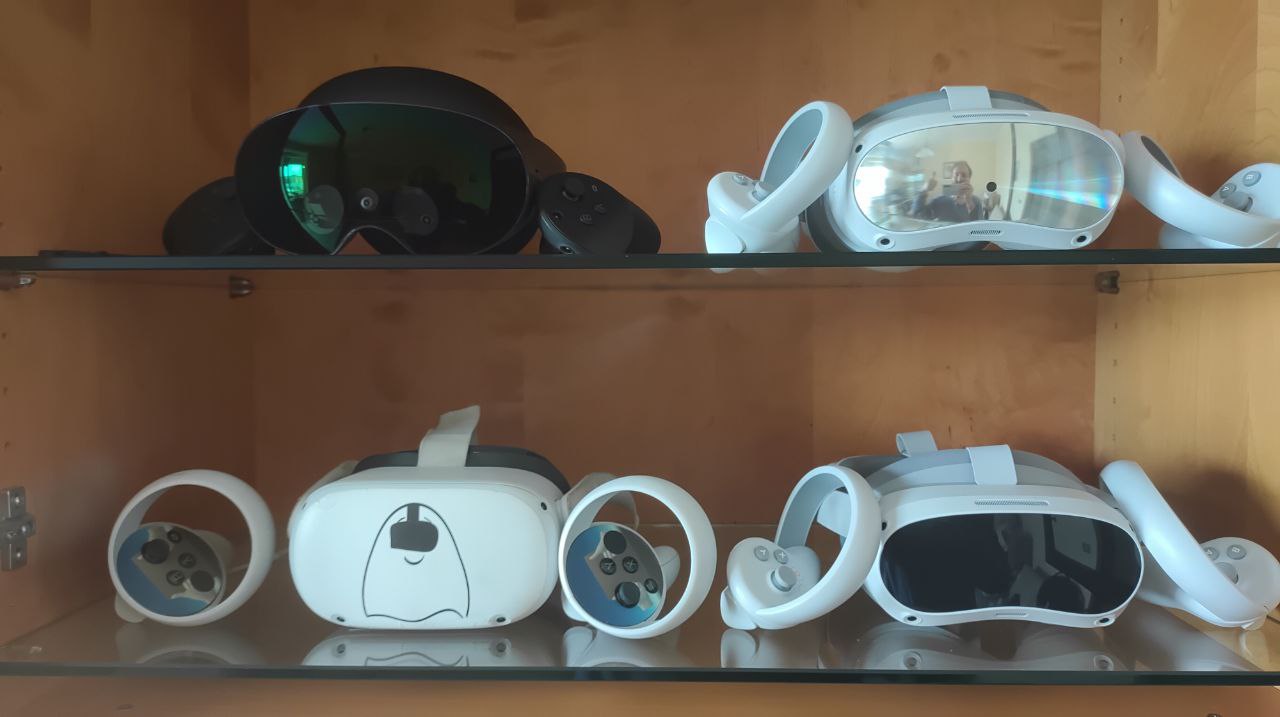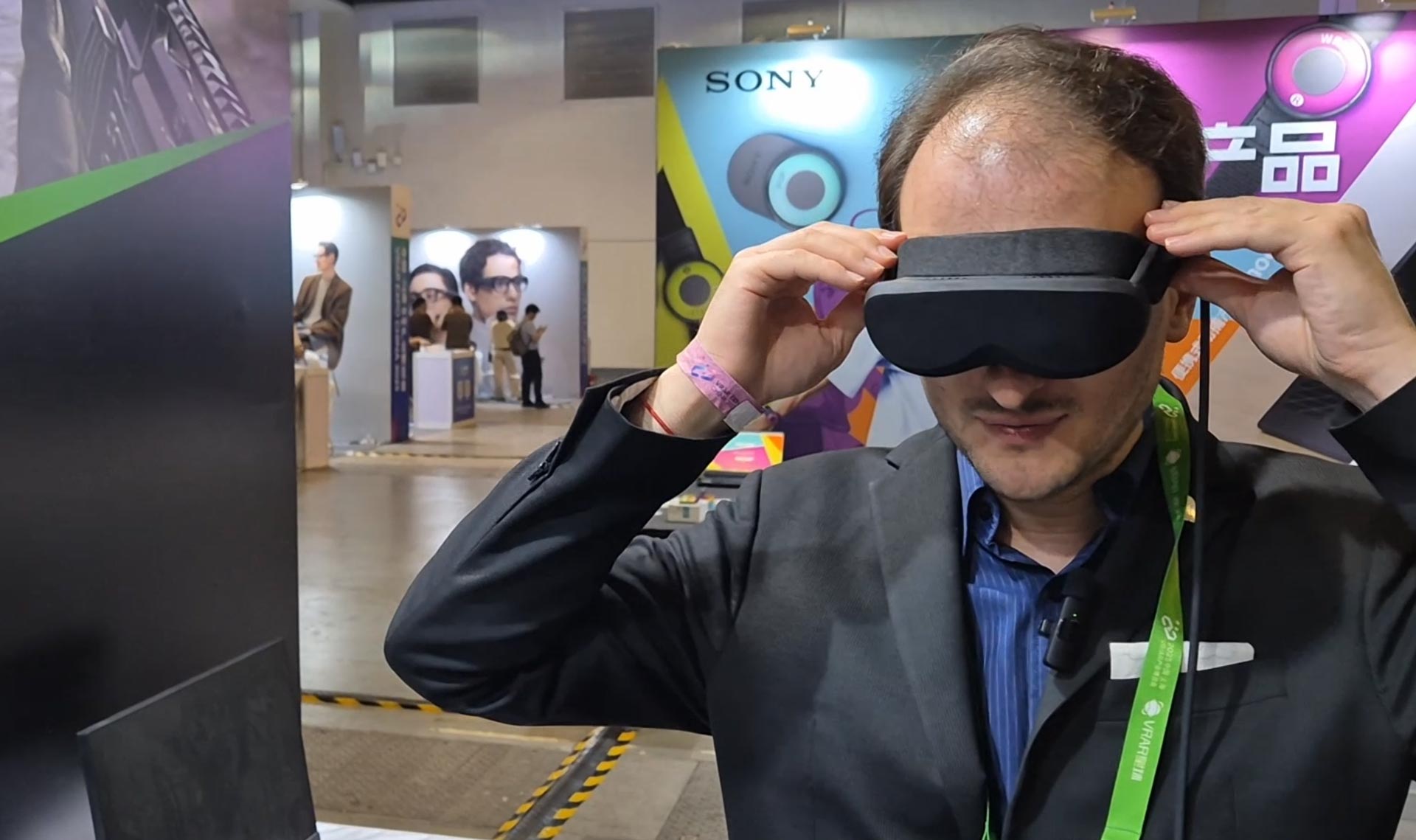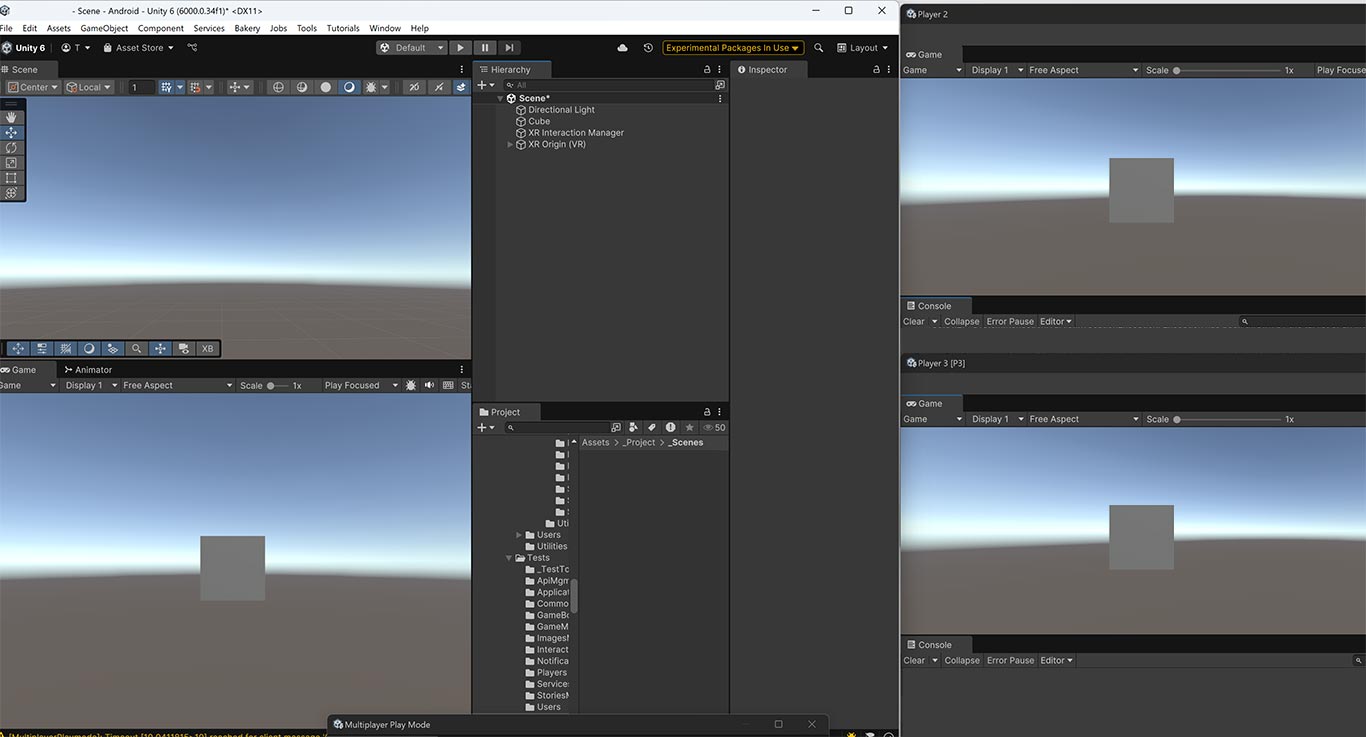Startups, innovation, and the transitional moment of XR
XR is in the initial part of a new cycle where mixed reality, spatial mapping and computing, and AI are starting to become always more relevant. But the devices are still bulky, expensive, and full of friction, and this creates an innovation dilemma for people wanting to make a business in immersive realities. Let me explain to you what I mean.
Now it’s the right time to start an XR company
A few months ago, Jack Soslow, investing partner in Andreessen Horowitz, one of the biggest VC funds in the US, commented on Twitter that now is the moment to start an AR/VR company
This is an amazing endorsement for XR, as I’ve already commented a few times on this blog. But it also hides many difficulties under this simply excited statement.
Timing is an important factor when you’re starting a business. Many pioneers are simply too early and their companies fail because the market is not ready for them. Talking about myself, my first business was about full body VR in 2014, a moment where VRChat was not a thing yet, and so no one cared about the technology we were building. If I had launched the same product a couple of years ago, instead, I would have probably immediately found a market interested in it. The problem with timing is that no one knows when is the right time to launch a business in a particular sector… we can all speculate, but at the end of the day, is still like playing with dice at the casino.
But is it really the right time?
One of the hidden problems in the above sentence is that if an investor tells you to launch a company today, it is probably because he sees the market becoming relevant in 3 years. He sees the technology as “promising” and maybe ready to take off, but not mature yet. So it’s early enough that you can be among the first movers, but late enough that you are not going to die like a pioneer without earning a dime (I mean… like me in the past).
But of course, since it’s always a gamble, you don’t know if the prediction is right. When I started with XR in 2014, every year should have been “the year of XR”. Every year it seemed the tech was ready to take off. Instead, in 2024, we are still here talking about these still being “the early days” of technology. Analysts make wrong predictions about XR every day. It’s fun that a few days ago I discovered that a psychologist named Philip Tetlock demonstrated that, generally, “the accuracy of our predictions is no better than chance, which means that flipping a coin is just as good as our best guess.” (Tetlock added that only a few real experts, that he calls “superforecasters” are good at making predictions in their field, while most of the other people are not) [source]. This taught me not to believe much in the speculations that people make.
For sure XR has gone a long road in the last few years and the market is much better than it was before the launch of the Quest 2. But at the same time, we are currently in an Autumn of XR, where investments are cold, the market is stagnating, and even the champion that we were all waiting for, that is Apple, didn’t move (yet) the needle as we hoped for. And here we come to the second hidden problem: even if Jack Soslow were a superforecaster and he was right in saying that now is the right moment to found an XR company, my question to him would be how to survive now. If I set up a company today when the market is not ready and investors are not willing to give me money, I should be ready to spend the next couple of years surviving with my own pocket money or anyway struggling a lot. Which is not easy at all. So is it really the right time? Maybe.
The transitional moment of the technology

The third question that comes to my mind when reading to open an XR company today is “…but a company about what?”. My question is a bit deeper than it seems at its surface: of course, every entrepreneur should start a company about his own vision. But the problem is that we are in a transition phase of the technology, where it is not exactly clear what is going to happen in the next times, so it’s hard to understand when is the right time to launch a product about a certain problem.
Let me explain what I mean with a few examples. Consumer-oriented VR has always been about gaming. So most of the companies that I’ve seen succeeding in the last few years have either targeted B2B (doing mostly industrial training) or targeted consumers and made games. Gaming is still very strong, but now, after Apple launched “Spatial Computing”, it seems that many XR companies are realizing that MR headsets can be general computing machines. They are now actively looking for content of this kind: Meta has recently launched a “lifestyle accelerator” to fund interesting startups that are making NON-GAMING content for Quest. This seems to point to an interest in making the Quest a more general-purpose device… but at the same time, it is still mainly a game console, so non-gaming apps are currently disadvantaged in launching there. So is it really a good time to launch a non-gaming app for Quest? Maybe.
This transition phase regards many things. Two days ago, Meta launched AI integration inside Meta Quest 3.
On paper, this sounds cool: you can look at things with your Quest and ask the AI to analyze what it sees and answer a question of yours. In reality, today this makes little sense: who is wearing the Quest in every moment at home? If I have a problem with the washing machine and I want to ask a suggestion to ChatGPT, I most probably am going to use my smartphone: it’s already on, it is already close to me. I don’t turn on my Quest, put it on my head, wait for the operating system to load, maybe also set up my Guardian… my washing machine would have probably exploded in the meantime. I think Meta has done a good thing in adding AI, but it’s not something that is very useful today, but more something that will be useful in the future, when MR glasses will be more lightweight and have a better passthrough, so maybe people will keep them on at home for some time.
Meta AI can analyze images, but we developers do not have access to camera frames in our mixed-reality applications. What if I have a fantastic killer idea but it needs camera access? Meta’s CTO Andrew Bosworth hinted at the fact that when times are ripe, Meta will provide camera access to content creators. But no one knows when this is going to happen. Is it next year or in 5 years? And what if I want to build a startup about my killer MR idea? Can I launch my startup hoping that “sometimes in the future” I will actually have the possibility of building and distributing my product? As I’ve said, timing in a company is fundamental… if Meta is offering camera access in 1 year, maybe I can start a company today and do a prototype and look for funds… but if it is in 5 years, I’m going bankrupt before I can launch my product.
Talking about the everyday use of XR, a few weeks ago it became viral on social media an experience developed during a hackathon where people could have an AI-powered cooking assistant on the Quest. I found it amazing, it’s absolutely cool that you can have an assistant who can analyze the content of your fridge and suggest to you what to cook and how to do it. The funny thing is that I had a similar idea 3-4 months ago myself, but after having spoken with some colleagues (hey Denis, I’m talking about you), we dropped the idea. Why? Well, the technology is not ready, yet. First of all, without camera access, the application can not see the fridge content or how you are cooking. So the app loses a lot of functionality and no one knows when these can be added (for the points discussed above). Second, today, I would never cook with the Quest 3 on. Apart from the fact that keeping the Quest 3 on the head for a long time is uncomfortable, I would never use my headset in an environment full of steam and squirting oil. I can do it once, just to try the experience, but I would never do it every day. Even worse with the Vision Pro… I would treat a $3500 headset with much more care. All of this not to mention the passthrough that can become more noisy with the dark illumination of dinner time. One day, when headsets will be cheaper, lighter, water resistant, etc… it will be the norm to cook with it on. But that day is not today… and again, we do not know when it is going to happen. So is it the right time to launch an MR cooking application? Well, maybe, maybe not.
Another category that keeps a special place in my heart is widgets. I forecast one day someone will become very popular (and maybe rich) making a fantastic weather widget for XR headsets. You wake up, you put your XR glasses on, and one of the first things you see is how will be the weather throughout the day, with some fancy 3D animations, and the AI suggests what to wear during the day. It’s the future, we all know it, and in fact, many concept videos of AR glasses show something similar. But would a weather MR application work today? Absolutely not, because if you want to know what’s the weather today, you don’t put on the Quest that you have on your desk, wait for it to boot up, etc etc… you just unlock your phone and probably a weather widget already gives you the answer. Widgets will be a thing for AR glasses when we wear them the whole day, but again, that day is not today. Meta is launching Augments “soon” and this is going to be very interesting (I’m quite bullish about them), but again, Augments will make more sense the moment people keep the headset on for some time during the day. If the user turns on the Quest 3 just to launch Gorilla Tag, he is not going to spend much time with his Augments. Anyway, for sure there will be an Augment about the weather. But is it the right time to launch a product about it? Maybe, maybe not.
Talking about platforms, Apple just launched its devki… ehm product, the Apple Vision Pro and Samsung is going to launch its own headset in Q1 next year according to the latest rumors. Both headsets are expensive and will have lukewarm sales. But potentially, in the future, they could be market leaders. If you launch now on their platforms, you can be one of the first movers, but at the same time, make very little money for many months, until these platforms take off (maybe in 3-5 years). So is it the right time to launch your content on the Vision Pro? Well, maybe.
The pursuit of the right timing
We are in a transitional moment, the beginning of a new cycle of XR technology, and it is normal that it is a confusing moment. All transitions are like that. This means that is also the moment of new opportunities, because finally, after so many years, many ideas start appearing as possible. They are not feasible yet, but now they are at arm’s reach, so they may be “close enough” to start a business about them. This is the moment where many people will try to seize opportunities and fail, and others will do the right product at the right time and will make good business. This is how entrepreneurship works in innovative technologies.
Having a startup in innovative tech is uncertain by default and that’s why you usually need 4-5 tries before starting a company that will actually succeed. And if you are an entrepreneur in tech you should know the risks, and decide to go on anyway because you truly believe in creating something new. Or otherwise, you should aim for something that is more certain today. This is the innovation dilemma in XR today: should you aim at a business that is feasible today and for which there are already some competitors (e.g. you start a new Gorilla-Tag-like game) or should you risk going for the new opportunities?
I have not an answer to all these uncertainties: if I could predict when is the right moment to launch an XR business, I would be a billionaire, and probably in this moment instead of writing this post, I would be washing my Lamborghini. I tried to talk about the above doubts to a few other XR folks, but of course, no one had the answers, either. But since I don’t want to leave without even a suggestion, I will just give you a few thoughts.
The first is that even if we are bad at predicting, I think you can still get the taste of how certain technologies are distant ahead, and avoid anything that looks very far away. If you have a business idea about something that works only if 50M people have AR glasses they wear every day all the time, I would suggest you not start it, because that scenario is many years ahead. All the analysts would agree on that. Non-gaming applications for XR headsets are much closer, considering that Apple Vision Pro is already dedicated to that and Meta flagged its interest in investing in them. So maybe it makes sense to start a business about that. You can not predict the times, but maybe you can have an idea of the order of magnitude and try to jump into the void when the times feel “ripe enough”.
The second suggestion is that you can still work on your product as a multiple-step process, where the first step is already feasible today. So for instance your killer idea for 50M AR glasses could be transformed today into an AR app for mobile that you can already put on the market today and that in 7 years will become your complete vision of a full outdoor AR app for glasses. If you have a killer idea about passthrough AR, maybe you can convert it to an enterprise solution that you develop for the Pico 4 Enterprise (which allows for camera access if your app is approved by Pico) and then you go for consumers when consumer headsets will all have camera access. Think if you can play safe now and go for the moon later.
The third piece of advice is that you could instead focus on what works today. It’s not necessary to always aim at the future, you can just create a company about what is profitable today. VR is already experimental enough to go for something even more experimental. You can make a social VR game inspired by Gorilla Tag and have a good user base. If this is what you want, go for it. There are a lot of ideas that became a hit with their current technology and current market: Gorilla Tag is an example of a product that became a success even without needing a new technology.
The final suggestion is not to give up. As a tech entrepreneur, you should enjoy risks, because the moment you decide to work on cutting-edge technologies that are not mainstream yet, you know you are betting. You have to enjoy the ride and at the same time, hope that your gamble will pay off. This is the lifestyle you should have. As my friend Marco used to say “If you go for an innovative startup, you know you have many uncertainties. If you want a safe business, you should open a bakery”.
Disclaimer: this blog contains advertisement and affiliate links to sustain itself. If you click on an affiliate link, I'll be very happy because I'll earn a small commission on your purchase. You can find my boring full disclosure here.



